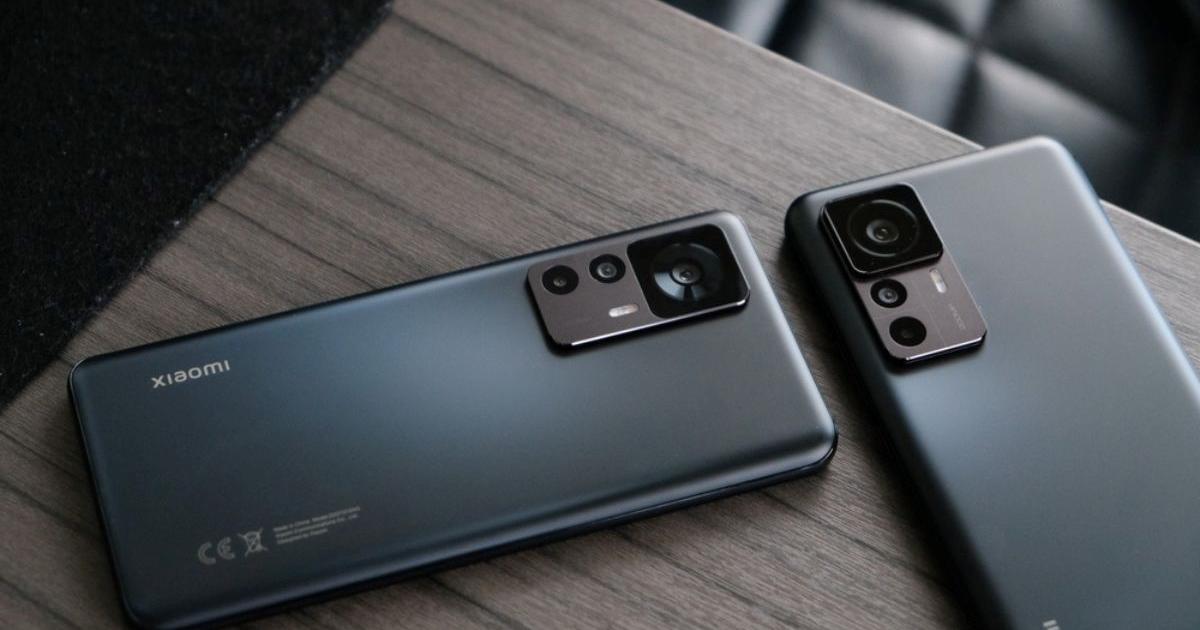Icon: enlarge
The X3 NFC from Xiaomi's subsidiary brand Poco
Photo: Matthias Kremp / DER SPIEGEL
You don't know Poco?
Never mind, they are still fairly new in Germany.
Poco is a subsidiary of the Chinese electronics manufacturer Xiaomi, which is currently preparing to strengthen its presence in Germany.
So far, Poco has mainly attracted attention with its affordable smartphones that combine mid-range equipment with a few high-end features.
The X3 NFC is no exception - and at the same time unusually inexpensive: With 64 gigabytes (GB) of storage space, it costs 230 euros, with 128 GB it costs 270 euros, and thus a little less than, for example, the OnePlus Nord and significantly less than Google's Pixel 4a.
Compared to these two smartphones, the screen of the Poco X3 NFC is very large.
With a diagonal of 6.67 inches, it offers significantly more space than the 5.8-inch display of the Pixel 4a and even a little more than the North.
The resolution of 2400 x 1080 pixels is not at the top level, but good enough.
Above all, however, it works with a refresh rate of 120 Hertz, i.e. 120 frames per second, which is unusual in this price range.
The high frame rate ensures that fast movements are displayed smoothly on the display.
You notice that in fast games, in movies and very clearly when scrolling on websites, which just runs smoothly.
The disadvantage: 120 Hertz consume more electricity.
So if you are away from your charger for a long time, you should take advantage of the option to turn the screen down to an economical 60 Hertz.
The display quality is pretty good.
Pretty much because the screen produces strong colors, shows well-defined details and is quite bright.
However, it does not come close to the strong contrasts that Samsung's upper-class smartphones produce, for example, and above all to their enormous brightness.
Most users shouldn't notice this in everyday life, because overall the image reproduction is: pretty good.
The only thing that bothered me personally was the clear blue cast.
Good cameras when viewed in light
Somehow part of the screen is the front camera, which is hardly noticeable as a so-called punch-hole camera and yet has a resolution of an impressive 20 megapixels.
Without a depth sensor, but with the help of good algorithms, she even managed to make me look good on selfies.
On the back, a construction protrudes from the housing, which includes a 64-megapixel wide-angle camera, an ultra-wide-angle camera with 13 megapixels and a macro lens with 2 megapixels.
In addition, the usual LED flash and a depth sensor can be found here, which, for example, provides an artificial blurring of the background in portraits.
All these cameras take good photos in good light.
Sharpness, color rendering and brightness are okay.
This doesn't work so well in low light.
While the high-resolution main camera still manages to take good shots and ultra-wide-angle snapshots are okay, you should keep your fingers off the zoom button after dark.
The Poco X3 NFC is the first smartphone to feature the new Snapdragon 732G chip.
Chip manufacturer Qualcomm promises that it will deliver 15 percent more power than its predecessor, the 730G, which drives the Google Pixel 4a, for example.
In a direct comparison, the Poco X3 NFC actually achieved slightly better results in some test programs, but this is not noticeable in everyday life.
Basically you can say: The Poco is fast enough for all everyday applications and games, thanks to its 6 GB of RAM.
display
POCO X3 NFC - Smartphone 6 + 128 GB, 6.67 inch FHD + punch-hole display, Snapdragon 732G, 64 MP AI quad camera, 5.160 mAh, Cobalt Blue (official version + 2 years guarantee)
From € 249.90
Price query time
10.09.2020 3.30 p.m.
No guarantee
Icon: Info
Order at AmazonIcon: amazon
Product reviews are purely editorial and independent.
Via the so-called affiliate links above, we usually receive a commission from the dealer when purchasing.
More information here
However, the same test programs also show that the chip only delivers half as much power as that in a Samsung Galaxy Note 20. In view of the four times higher price of such a high-end smartphone, however, this is tolerable.
The processor does not suck excessively on the battery.
The Poco X3 NFC achieved a battery life of ten hours in my endurance test, the playback of a Full HD video at full screen brightness and 120 Hertz image playback rate.
This is far from the more than two days runtime that Poco has promised, but with normal use and activated automatic brightness control, you can get through the day well.
In view of the considerable size of the battery, which essentially contributes to the fact that the X3 NFC is not particularly slim, this is not a special achievement.
The operating system is Android 10, under the MIUI interface known from Xiaomi.
Conclusion
Per
Full color screen with high refresh rate
Good cameras if there is enough light
Contra
Blue cast of the display
You can hardly expect more smartphones at this price.
Except for the bluish cast, which won't bother everyone, the screen of the Poco X3 NFC is great and the cameras deliver good results as long as there is enough light.
However, I would recommend the € 270 variant with 128 GB of storage or order a memory card when you buy it, because 64 GB is simply not enough these days.
Icon: The mirror
Background: Product tests in the Netzwelt department
Which products are reported in the Netzwelt section? Up arrow Down arrow
We decide for ourselves which products we report in the Internet world and which we test or not. We do not receive any money or other consideration from the manufacturer for any of the test reports.
For various reasons it can happen that we do not report on products, although we have corresponding test products.
Where do the test products come from? Up arrow Down arrow
We usually get test devices and review copies of games from the manufacturer free of charge for a certain period of time, sometimes even before the official release.
In this way, our test reports can appear in good time or shortly after the product is published.
We only test pre-release versions or devices from pre-series production in special cases.
We usually wait until we can get test devices or game versions that are identical to the retail versions.
In some cases, we also buy products ourselves at our own expense if they are already available in stores or online.
Can the Netzwelt editors keep the products? Up arrow Down arrow
Usually, test devices are sent back to the manufacturer after the end of the test.
The exception are review copies of games and so-called permanent loans: For example, we have game consoles and smartphones in the editorial office that we are allowed to use for a longer period of time.
For example, we can report on software updates, new accessories and new games or make long-term judgments.
Do companies invite Netzwelt editors to travel? Up arrow Down arrow
DER SPIEGEL always bears the costs for travel to events, regardless of whether they take place in Germany or abroad. This also applies if, for example, a company takes over travel planning due to short-term appointments.
Events to which we travel at our own expense include the Ifa, CES, E3 and Gamescom trade fairs as well as events from companies such as Apple, Google, Microsoft or Nintendo.
At conferences like the Chaos Communication Congress or the re: publica, like other press representatives, we usually get free press tickets because we report on the conference and are not traditional participants.
What about the Amazon ads in some articles? Up arrow Down arrow
Since December 2016, there have been Amazon ads in some Netzwelt articles that contain so-called partner links.
If a user visits Amazon via such a link and buys online there, DER SPIEGEL receives a share of the sales in the form of a commission.
The ads appear in articles regardless of whether a product test is positive or negative.








